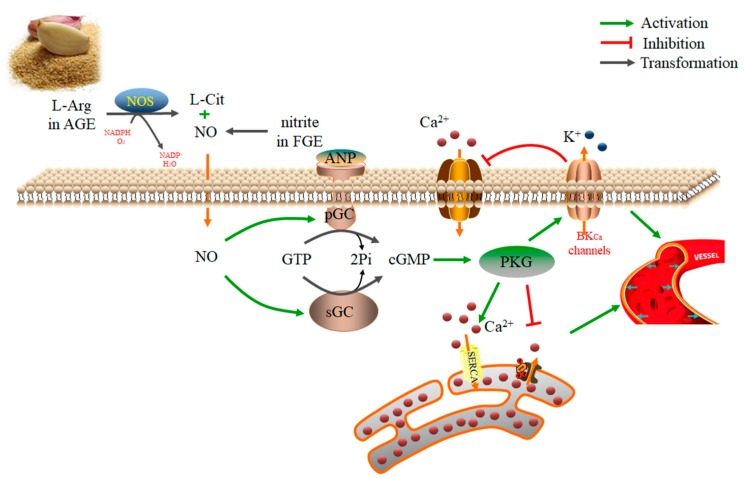Figure 2.
The mechanisms of the antihypertensive properties of garlic extract via increasing the production of nitric oxide (NO) in vascular smooth muscle cells. The l-arginine (L-Arg) in aged garlic extract (AGE) could be transformed into NO and L-citruline (L-Cit) mediated by nitric oxide synthase (NOS). Moreover, the nitrite in the fermented garlic extract (FGE) could be converted into NO in vivo by Bacillus subtilis. NO and atrial natriuretic peptide (ANP) activated particulate guanylyl cyclase (pGC) and soluble guanylyl cyclase (sGC), thus catalyzing the transform of guanosine triphosphate (GTP) to cyclic guanosine monophosphate (cGMP). The elevated cGMP activated PKG, and PKG decreased intracellular Ca2+ concentration by increasing intracytoplasmic Ca2+ transport into the sarcoplasmic reticulum through the sarco/endoplasmic reticulum Ca2+-ATPase (SERCA) pathway, thereby preventing the release of Ca2+ from the sarcoplasmic reticulum to the cytoplasm, and stimulating the Ca2+-activated K+ (BKCa) channel on the cell membrane, as well as reducing the Ca2+ influx. As a result, the vascular smooth muscle relaxed, and the blood vessels dilated.

